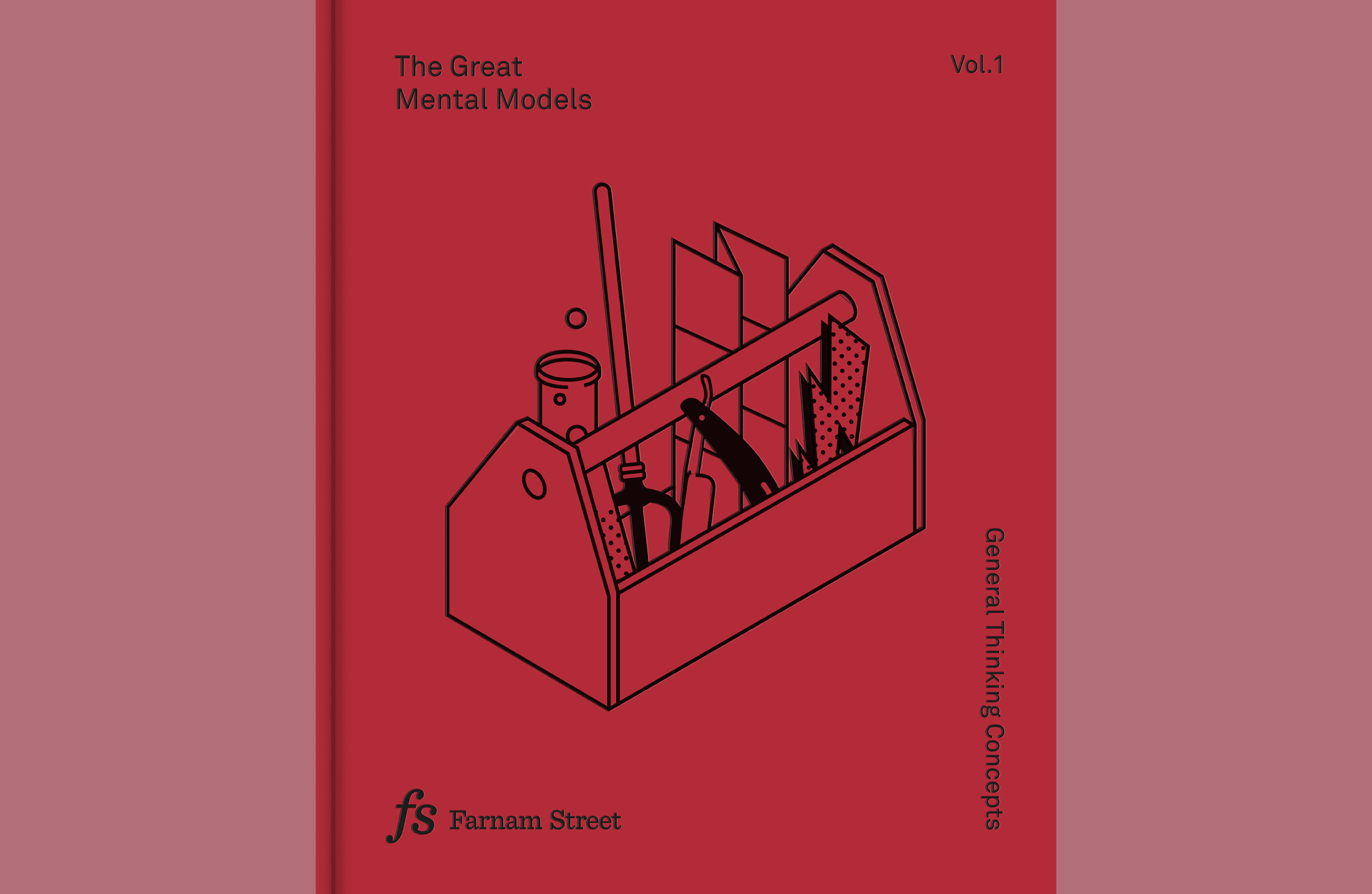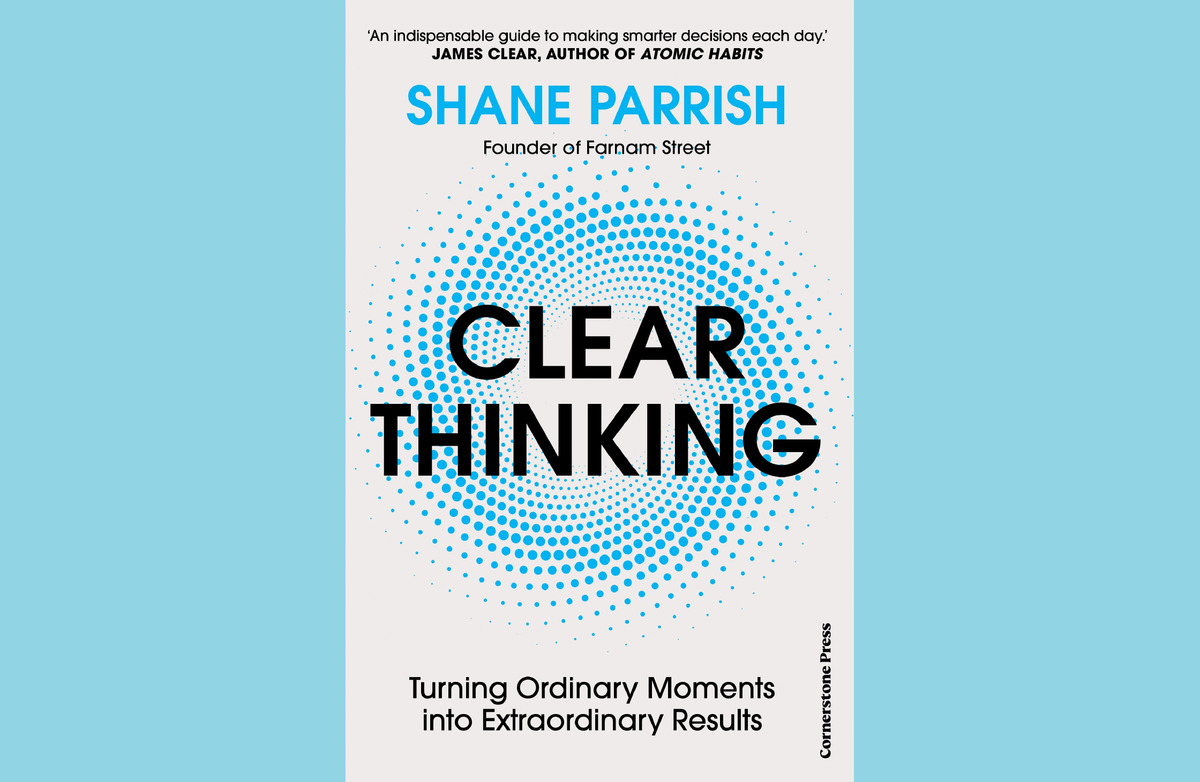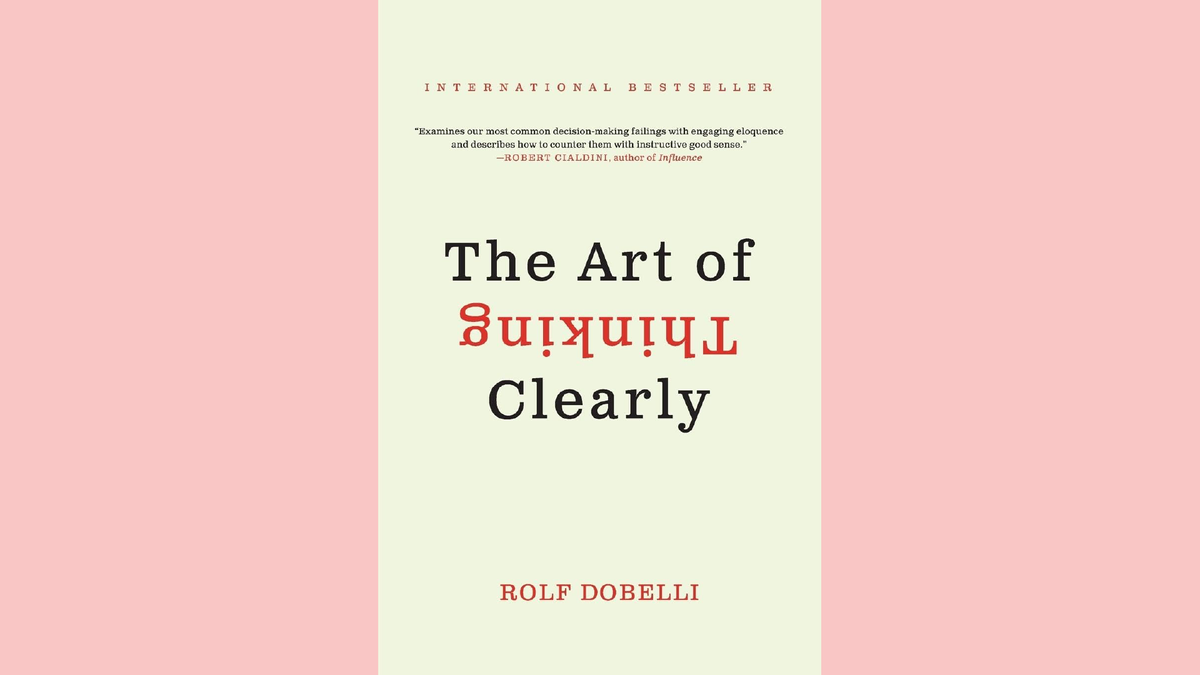20 Tantalizing Ideas To Quickly Improve Problem Solving
Unlock the power of mental models with insights from Shane Parrish and Rolf Dobelli. Learn to improve decision-making and problem-solving using key models and biases, complete with practical examples and scenarios.

Mental models are indispensable tools that help us navigate the complexities of life and make better decisions. Two seminal books, “The Great Mental Models: General Thinking Concepts” by Shane Parrish and “The Art of Thinking Clearly” by Rolf Dobelli, provide a comprehensive overview of critical mental models and cognitive biases. This article delves into these books' insights, providing examples to illustrate how these models can enhance our thinking and decision-making.

The Great Mental Models: General Thinking Concepts
Introduction to Mental Models
Mental models are frameworks that help us understand and interpret the world. They are essential for effective decision-making and problem-solving, offering a way to simplify and make sense of complex situations.
The Map is Not the Territory
This model emphasizes the distinction between reality and our representations of it. Understanding that models are simplifications can prevent us from mistaking them for reality, allowing for more accurate perceptions and decisions.
Example: A business model may predict market growth based on certain assumptions. However, actual market conditions might differ, requiring adjustments to the strategy.
“The map is not the territory, but it is an important tool for navigating the territory.” – Shane Parrish.
Circle of Competence
Knowing the boundaries of our knowledge and skills is crucial. Operating within our circle of competence ensures we make decisions based on what we know well while encouraging us to expand this circle through learning and experience.
Example: An investor specializing in technology stocks should avoid investing in biotechnology without adequate research and understanding, as it lies outside their circle of competence.
“Knowing what you don’t know is more useful than being brilliant.” – Shane Parrish

First Principles Thinking
This model involves breaking down complex problems into fundamental elements and building solutions from these basics. By focusing on a situation's core principles, it encourages innovation and more profound understanding.
Example: Elon Musk used first principles thinking to design more cost-effective rocket parts for SpaceX by questioning and redesigning from the ground up rather than relying on traditional aerospace methods.
“Boil things down to their fundamental truths and reason up from there.” – Shane Parrish
Thought Experiments
Using hypothetical scenarios to explore ideas can lead to deeper insights and novel solutions. Thought experiments allow us to test concepts without real-world risks, providing a safe space for creativity and exploration.
Example: Einstein’s thought experiment of riding alongside a beam of light led to his theory of special relativity, revolutionizing physics.
Second-Order Thinking
Considering our actions' long-term and indirect consequences helps us avoid unintended outcomes. This model teaches us to think beyond immediate effects and anticipate the ripple effects of our decisions.
Example: A city planning to build a new highway must consider the immediate traffic relief and the long-term impacts on local businesses, residential areas, and environmental factors.
“First-order thinking is simplistic and superficial, and just about everyone can do it. Second-order thinking is deep and complex, and far fewer can do it.” – Shane Parrish
Probabilistic Thinking
Understanding and applying the principles of probability helps us deal with uncertainty and make more informed decisions. It involves evaluating risks and likelihoods to navigate complex situations better.
Example: An insurance company uses probabilistic thinking to assess the likelihood of various events, such as natural disasters, and sets premiums accordingly to manage risk.
Inversion
Solving problems by thinking backward can reveal solutions that forward-thinking might miss. Inversion involves identifying what we want to avoid and finding the right path.
Example: Instead of asking how to succeed in business, an entrepreneur might ask how businesses typically fail and then develop strategies to avoid those pitfalls.
Occam’s Razor
The principle of simplicity suggests that the simplest solution is often the best. Occam’s Razor teaches us to avoid unnecessary complexity and focus on straightforward explanations and solutions.
Example: If a patient presents with a standard set of symptoms, a doctor should first consider the most likely diagnosis rather than rare and complex diseases.
Hanlon’s Razor
This model advises us not to attribute to malice what stupidity can explain. It encourages a more rational and forgiving perspective, reducing unnecessary conflict and misunderstanding.
Example: If a coworker forgets to send an important email, it’s more likely due to oversight rather than a deliberate attempt to sabotage a project.
The Falsification Principle
Rooted in scientific inquiry, this model emphasizes the importance of testing and challenging our assumptions. By seeking to disprove our theories, we strengthen our understanding and uncover more robust solutions.
Example: A scientist testing a new drug must design experiments to disprove the drug’s effectiveness and ensure the results are not due to bias or error.
“If it disagrees with experiment, it’s wrong. In that simple statement is the key to science.” – Richard Feynman (quoted in Parrish’s book)

The Art of Thinking Clearly
Introduction
Dobelli’s book focuses on cognitive biases and how they distort our thinking. Recognizing these biases allows us to make more rational decisions and avoid common pitfalls.
Cognitive Biases and Heuristics
Survivorship Bias
We often focus on successful outcomes and ignore failures, leading to a skewed perception of reality. Recognizing survivorship bias helps us make more balanced assessments and avoid unrealistic expectations.
Example: Only studying successful startups and ignoring the numerous failed ones can lead entrepreneurs to underestimate the challenges and overestimate their chances of success.
“We systematically overestimate our chances of success because we pay too much attention to successful people and too little to unsuccessful ones.” – Rolf Dobelli
Swimmer’s Body Illusion
This bias involves misinterpreting selection effects, such as attributing the success of elite athletes to their training rather than their natural physique. Understanding this illusion prevents us from making flawed comparisons and judgments.
Example: Assuming that following a celebrity’s diet and exercise regime will lead to the same body type without considering their unique genetics and physical attributes.
Clustering Illusion
Humans tend to see patterns where none exist. The clustering illusion can lead to erroneous conclusions and superstitions. Recognizing this bias helps us remain objective and rely on evidence rather than perceived patterns.
Example: Believing that a lottery number sequence is “due” because it hasn’t appeared in a while, despite each draw being independent and random.
Errors in Judging Probability
Confirmation Bias
We tend to seek information that confirms our pre-existing beliefs and ignore contradictory evidence. Overcoming confirmation bias involves actively seeking out and considering opposing viewpoints.
Example: A person who believes in a particular health supplement might only read articles that support its benefits and dismiss studies showing it is ineffective.
“Confirmation bias is the mother of all misconceptions.” – Rolf Dobelli
Availability Heuristic
Our judgments are heavily influenced by readily available information rather than all relevant data. Awareness of this heuristic encourages us to seek comprehensive information before making decisions.
Example: After hearing about airplane accidents in the news, people might overestimate the danger of flying compared to driving, despite statistical evidence.
Anchoring Effect
Initial information (the anchor) heavily influences subsequent judgments. To mitigate the anchoring effect, we should approach decisions with fresh perspectives and consider a wide range of information.
Example: If a car salesperson starts with a high initial price, the final negotiated price may still be higher than if the starting point was lower, even if the high price was arbitrary.

Overestimating Our Knowledge and Predictive Abilities
Overconfidence Effect
Overestimating our abilities and knowledge can lead to poor decisions. Recognizing overconfidence helps us seek additional input and verify our assumptions.
Example: An investor might feel overconfident about their stock picks and ignore signs of an impending market downturn, leading to significant losses.
Hindsight Bias
Believing that events are predictable after they have occurred distorts our understanding of past decisions and outcomes. Being mindful of hindsight bias helps us learn more accurately from past experiences.
Example: After a company fails, analysts might say it was obvious due to sure signs, although these were not seen as clear indicators before the failure.
Faulty Thinking in Evaluating Options
Sunk Cost Fallacy
Continuing a project because of invested resources rather than future benefits leads to poor decision-making. Recognizing this fallacy helps us cut losses and make more rational choices.
Example: Continuing to repair an old car that frequently breaks down because a lot of money has already been spent on repairs rather than buying a more reliable vehicle.
Endowment Effect
We tend to overvalue what we own, leading to biased decisions. Overcoming the endowment effect involves objectively assessing the value of our possessions.
Example: An individual might price their house higher than the market value because of their emotional attachment, making it harder to sell.

Social Influences on Decision-Making
Social Proof
Relying on the behavior of others as a guide can lead us astray. Awareness of social proof helps us maintain independent thinking and make decisions based on our analysis.
Example: Investing in a stock because many others are buying it without researching its value or prospects.
Authority Bias
Overvaluing the opinions of authority figures can lead to flawed decisions. Critically assessing authority-based information ensures more balanced and informed choices.
Example: Following a diet plan just because a celebrity endorses it without evaluating the plan’s health benefits and scientific backing.
Misjudging Incentives and Motivations
Incentive Super-Response Tendency
Incentives can powerfully shape behavior, sometimes leading to unintended consequences. Designing effective incentives requires understanding how they will influence behavior.
Example: A company offering bonuses based on sales volume might encourage employees to focus on quantity over quality, resulting in dissatisfied customers.
Moral Licensing
Doing something good can lead to justifying questionable behavior later. Recognizing moral licensing helps us maintain consistent ethical standards.
Example: A person who donates to charity might feel justified in cheating on their taxes because they believe their charitable actions offset their dishonesty.
Emotional Influences on Decision-Making
Affect Heuristic
Emotions heavily influence our judgments and decisions. Managing emotional decision-making involves separating feelings from facts and making more rational choices.
Example: Choosing a vacation destination based on an emotional reaction to a beautiful photo without considering practical factors like cost and safety.
Loss Aversion
We tend to prefer avoiding losses over acquiring gains, which can lead to overly cautious behavior. Understanding loss aversion helps us take calculated risks and make more balanced decisions.
Example: An investor might avoid selling stock to prevent the pain of realizing a loss, even when selling would be the rational decision based on prospects.
Conclusion: navigate the complexities of life
Mental models and cognitive biases profoundly influence our thinking and decision-making. By understanding and applying the insights from Shane Parrish’s and Rolf Dobelli’s books, we can navigate the complexities of life more effectively. These models enhance our decision-making and help us become more rational, objective, and innovative thinkers.
About the Authors
Shane Parrish
Shane Parrish founded Farnam Street, a blog dedicated to helping readers think better, make better decisions, and live more meaningfully. He is also the author of “The Great Mental Models” series, which aims to teach readers about the core mental models that enhance decision-making and problem-solving. Parrish draws on various disciplines, including history, science, philosophy, and business.
Rolf Dobelli
Rolf Dobelli is a Swiss author and entrepreneur known for his work on cognitive biases and clear thinking. He is the author of several books, including “The Art of Thinking Clearly,” which has been translated into numerous languages and has sold millions of copies worldwide. Dobelli’s work focuses on improving decision-making by understanding and mitigating cognitive biases. He is also the founder of Zurich: minds, a community of thinkers and scholars.
Scenarios for Using Mental Models
- Making Business Decisions (Circle of Competence)
• Stay within your expertise to make informed decisions, and seek expert advice when venturing into unfamiliar territory. - Problem-Solving in Engineering (First Principles Thinking)
• Break down complex engineering problems into their fundamental components and build solutions from the ground up. - Evaluating New Projects (Second-Order Thinking)
• Consider the long-term and indirect consequences of starting a new project beyond the immediate benefits. - Assessing Risks in Investments (Probabilistic Thinking)
• Use probabilistic thinking to evaluate the likelihood of various investment outcomes and manage risk accordingly. - Strategic Planning (Inversion)
• Plan by identifying potential failures and working backward to avoid them, ensuring a more robust strategy. - Medical Diagnosis (Occam’s Razor)
• In medical diagnosis, start with the simplest explanation that fits the symptoms before considering more complex or rare diseases. - Interpreting Workplace Mistakes (Hanlon’s Razor)
• When a colleague makes a mistake, consider the possibility of oversight or lack of knowledge rather than assuming malicious intent. - Scientific Research (The Falsification Principle)
• Design experiments to disprove your hypotheses, strengthening the reliability of your findings through rigorous testing. - Marketing Campaigns (Social Proof)
• Leverage social proof by showcasing testimonials and case studies to influence potential customers’ decisions. - Hiring Decisions (Confirmation Bias)
• Actively seek out disconfirming evidence about a candidate to ensure a balanced and objective hiring process.


